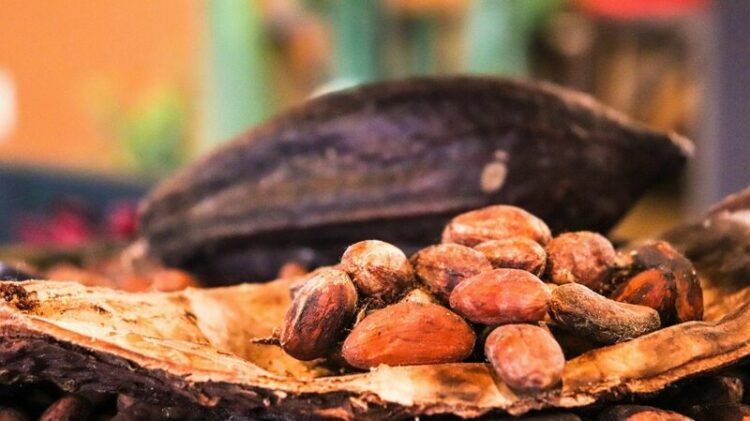September ICE NY cocoa (CCU24) on Friday closed down -379 (-4.70%), and September ICE London cocoa #7 (CAU24) closed down -285 (-4.30%).
Cocoa prices on Friday gave up an early advance and turned sharply lower, thanks to improved growing conditions in West Africa that could boost cocoa yields. Forecaster Maxar Technologies said showers are expected to continue this week in most of the cocoa-growing regions of West Africa, “keeping soil moisture favorable for crop growth.”
Cocoa prices initially moved higher on Friday due to better-than-expected cocoa demand. The National Confectioners Association reported that North America Q2 cocoa grindings rose +2.2% y/y to 104,781 MT, stronger than estimates for a slight decline. Also, the Cocoa Association of Asia reported Thursday that Asian Q2 cocoa grindings fell -1.4% y/y to 210,958 MT, a smaller decline than expectations of -2.0% y/y. Last Thursday, the European Cocoa Association reported that Q2 European cocoa grindings unexpectedly rose +4.1% y/y to 357,502 MT, versus expectations of a -2% y/y decline.
Tighter US cocoa supplies are supportive of prices. ICE-monitored cocoa inventories held in US ports fell to a 3-1/2 year low Friday of 3,100,681 bags.
Lower cocoa production in the Ivory Coast, the world’s largest producer, is providing underlying support for cocoa prices. Government data on Monday showed that Ivory Coast farmers shipped 1.62 MMT of cocoa to ports from October 1 to July 14, down by -29% from the same time last year. Trader Ecom Agroindustrial projects Ivory Coast cocoa production in the 2023/24 marketing year, which ends in September, will fall -21.5% y/y to an 8-year low of 1.75 MMT.
A bearish factor for cocoa prices was the projection from Ghana’s cocoa regulator on June 13 that Ghana’s 2024/25 cocoa production will rebound to 700,000 MT from 425,00 MT in 2023/24 as improved weather conditions boost cocoa yields. Ghana’s 2024/25 cocoa harvest begins in October.
Cocoa prices have underlying support from concern about the availability of cocoa beans for buyers. Reuters reported on June 12 that Ghana is considering delaying the delivery of up to 350,000 MT of cocoa beans to next season due to the country’s poor crops. Ghana is the world’s second-largest cocoa producer. Meanwhile, the Ivory Coast cocoa regulator, Le Conseil du Cafe-Cacao, announced on June 7 that companies that do not have processing plants in the Ivory Coast cannot buy cocoa beans from the Ivory Coast mid-crop until at least the end of July. The Ivory Coast cocoa regulator on July 11 at least allowed forward sales to resume for the 2024/25 cocoa crop to buyers with domestic processing plants.
Cocoa prices have support from concern about the West African mid-crop, which is the smaller of two annual harvests. Projections for the Ghana mid-crop, which starts in July, have been cut to 25,000 MT compared with an earlier forecast of 150,000 MT. Also, the Ivory Coast cocoa regulator said on March 7 that it expects the Ivory Coast mid-crop, which officially starts in April, to fall -33% to 400,000 MT from 600,000 MT last year. In addition, projections for Nigeria’s mid-crop have been reduced to 76,500 MT from an earlier estimate of 90,000 MT. Ghana’s Cocoa Board (Cocobod) said on March 25 that Ghana’s 2023/24 cocoa harvest would be only 422,500 MMT to 425,000 MT, half the country’s initial forecast and a 22-year low, as extreme weather and disease decimated the cocoa crop.
In a bullish factor, the International Cocoa Association (ICCO) on May 31 projected a 439,000 MT cocoa deficit for 2023/24, 17% larger than its February estimate of 374,000 MT and far larger than the 74,000 MT deficit in 2022/23. ICOO projects that 2023/24 cocoa production will fall -11.7% y/y to 4.461 MMT. In addition, ICCO projects a 2023/24 global cocoa stocks/grindings ratio of a 46-year low of 27.4%.
More Cocoa News from Barchart
On the date of publication, Rich Asplund did not have (either directly or indirectly) positions in any of the securities mentioned in this article. All information and data in this article is solely for informational purposes. For more information please view the Barchart Disclosure Policy here.
The views and opinions expressed herein are the views and opinions of the author and do not necessarily reflect those of Nasdaq, Inc.
Source link : https://www.nasdaq.com/articles/cocoa-prices-post-sharp-losses-ideal-crop-conditions-west-africa
Author :
Publish date : 2024-07-19 20:53:00
Copyright for syndicated content belongs to the linked Source.
